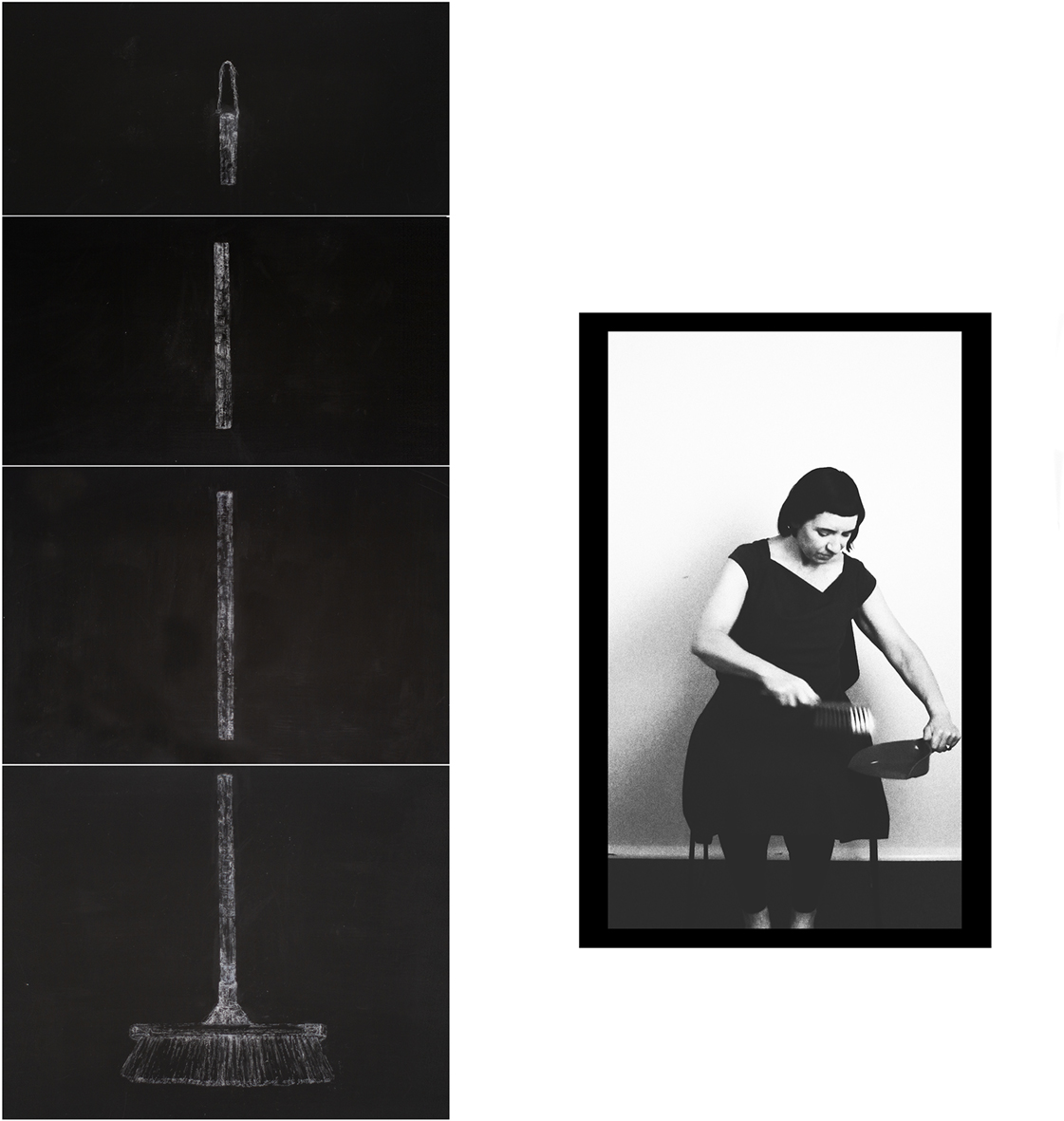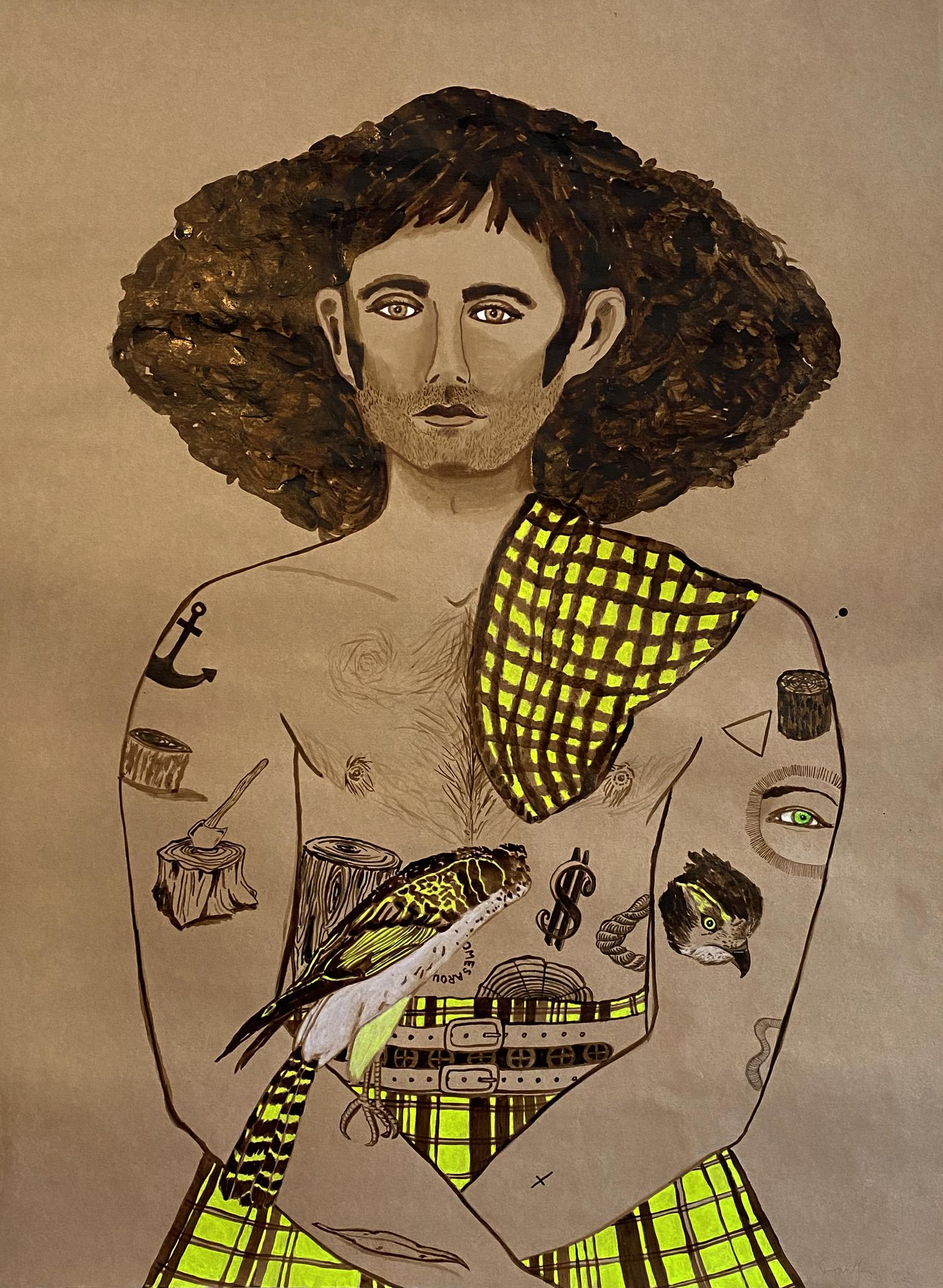Correspondence: Drawing Symposium 2023

Location: National Art School, Cell Block Theatre / Online
Full price $150 / NAS Alumni $120 / Student $70 / (in person includes lunch and refreshments)
Online $50
SYMPOSIUM
Drawing has a special place in conversations that artists have with each other about their work. The National Centre for Drawing’s 2023 symposium is based in this correspondence between artists, their ideas and the ways that drawing helps elucidate them. It will celebrate the special role that drawing plays in connecting people, thought, times and places.
We present four very different sets of artists each of whom have established dialogues across distances. Each corresponding pair of artists brings perspectives on the common ground that they share, shedding light on the role of drawing in their practice and the drawings that inspire them.
Hosted in the National Art School’s historic Cell Block Theatre, you are invited to attend either in person or online.
Background
The word ‘correspondence’ means a close similarity or connection as well as communication across distances. Shared experiences of country, gender, language, ideas, politics or materials correspond in their analogous qualities, just as the myriad of ways that artists talk to each other is an important part of making art. Each of the artists will talk about specific drawings that inspire them as well as their own drawings. The corresponding interests of each pair of artists will enrich the perspectives that are presented and build dialogues that explore drawing’s dynamic role in the contemporary art world.
This dialogue will be extended both physically and digitally as the symposium enables both physical and on-line participation.
The National Centre for Drawing at the National Art School promotes and nurtures practice, research and scholarship in drawing in all of its manifestations. Positioned at the core of an educational institution and cultural precinct, it enables a range of audiences to engage more deeply with drawing. Through the practice of drawing, curatorial projects, exhibitions, publications, conferences, lectures and other special events, it nurtures a curiosity around drawing that is grounded in precedent but extends towards the unknown.
Speakers
Vernon Ah Kee (QLD) and Brian Martin (VIC)
Sera Waters (SA) and Kay Lawrence (SA)
Carolyn Craig (NSW) and Joan Ross (NSW)
Hiraku Suzuki (Japan) and Gary Warner (NSW)
VERNON AH KEE

Vernon Ah Kee’s conceptual text pieces, videos, photographs and drawings form a critique of Australian popular culture from the perspective of the Aboriginal experience of contemporary life. He particularly explores the dichotomy between Aboriginal and non-Aboriginal societies and cultures. Ah Kee’s works respond to the history of the romantic and exoticised portraiture of ‘primitives’, and effectively reposition the Aboriginal in Australia from an ‘othered thing’, anchored in museum and scientific records to a contemporary people inhabiting real and current spaces and time.
Ah Kee is a descendant of the Kuku Yalandji, Waanji, Yidindji, Koko Berrin and Gugu Yimithirr peoples. Born 1967 in Innisfail, North Queensland, Australia. Lives and works in Brisbane, Australia. Ah Kee’s work has been exhibited in a number of significant national and international exhibitions, including: ‘ESPRESSIONI CON FRAZIONE’ (2022), Castello di Rivoli, Turin, Italy; ’A Year in Art: Australia 1992’ (2021), Tate Modern, London; ’unDisclosed’: 2nd National Indigenous Art Triennial’, National Gallery of Australia (2012); ‘SALTWATER: A Theory of Thought Forms’ 14th Istanbul Biennial (2015); ’Ideas of Barack’, National Gallery of Victoria (2011); ’Revolutions: Forms that turn’, the 16th Biennale of Sydney (2008); ‘Once Removed’, Australian Pavilion, Venice Biennale (2009); and ’Sakahàn: International Indigenous Art’, National Gallery of Canada (2013). Recent major group shows of his work include: ‘The National: New Australian Art (2020)’, Carraigeworks, Sydney; ’Body Language’ (2019), National Gallery of Australia; ‘When Silence Falls’, Art Gallery of New South Wales (2015-16); ‘Encounters’, National Museum of Australia (2015-16); ‘Brutal Truths’, Griffith University Art Gallery (2015-16); and ‘Everywhen: The Eternal Present in Indigenous Art from Australia’, Harvard Art Museums (2016); . In 2020 Ah Kee presented a major new work as part of his solo exhibition ‘The Island’ at Campbelltown Arts Centre, Sydney. Ah Kee’s work is held in a number of major collections within Australia and overseas including the Tate Modern, London.

BRIAN MARTIN

Born in Redfern Sydney, Brian is Bundjalung, Kamilaroi and MuruWarri. As a leading Indigenous artist and academic, he is represented by William Mora Galleries and has been a practising artist for thirty years, exhibiting both nationally and internationally specifically in the media of painting and drawing. His research and practice focus on refiguring creative practice and culture from an Indigenous ideological perspective based on a reciprocal relationship to “Country”. Brian was the inaugural Associate Dean Indigenous at Monash University Art, Design and Architecture and is also Honorary Professor of Eminence at Centurion University of Technology and Management in Odisha, India. He is Professor and Director of Wominjeka Djeembana Research Lab at Monash University.

SERA WATERS

Sera Waters is an artist living upon Kaurna Country, South Australia. Her practice examines ongoing legacies of settler-colonial homemaking, specifically domestic textiles, hand-craft traditions and familial patterns. Her PhD, titled ‘Genealogical Ghostscapes’, was completed in 2018 at University of South Australia. In 2022 Waters exhibited in Free/State: 2022 Adelaide Biennial of Australian Art, with her series of embroidered Storied Sail Cloths later exhibited in the Busan Biennale 2022: We, on the Rising Wave, South Korea. Waters’s Future Traditions project, enabled by the 2020 Guildhouse Fellowship, is showing at Art Gallery of South Australia until April 16 2023. Waters is represented by Hugo Michell Gallery.

KAY LAWRENCE AM

Kay Lawrence AM is a visual artist and writer and Emeritus Professor at the University of South Australia. She lives on Peramangk land in the Adelaide Hills. For more than forty years she has forged an internationally recognised textiles practice with work held in many public collections including the National Gallery of Australia. She has completed significant commissions for public spaces and was made a member of the Order of Australia (AM) in1989 for her work designing and coordinating the making of The Parliament House Embroidery. Through her art making she critically engages with matters of personal and community identity in relation to place, exploring ideas of loss and connection through a practice centred on hand-making and grounded in the materiality and meanings of textiles.

CAROLYN CRAIG

Carolyn is an interdisciplinary artist and educator interested in counter visual practices –to consider how power operates through the body and its representational archives. Her research archives remnants from performative ‘acts’ and site–specific investigations that relate to bodily coercion and definitions of normal/deviant. This material is then re-contextualised through copy processes to destabilize its social collateral and articulate affect. Carolyn lectures at the National Art School in Sydney has been a finalist in the Churchie, Freemantle, Burnie, Bangkok Drawing and Print Triennial as well as others. She is a current director at Frontyard Projects, and founder of Schmick Projects.

JOAN ROSS

Dystopian and speculative, Joan Ross’ work re appropriates Australian landscapes marred by the impacts of colonisation, climate change, ecological devastation and violent colonial legacies, fluorescent yellow punctuates her works to symbolically mark colonialism’s hazards and as a warning & a metaphor. It keeps open a dialogue around colonisation and colonisers, their superiority in regards to land, greed & collecting ‘other peoples things’.
Ross is currently showing in AGNSW’s New Modern, she was the winner (and recent judge) of both the Sulman Prize at the AGNSW and the inaugural Ravenswood Women’s art prize in 2017. In 2018 she received the ACMI Mordant VR Commission, and in 2019 created a 20-metre panorama of Sydney for the hoarding outside the new Sydney Modern expansion at the AGNSW in 2019. In 2020 she was commissioned to make a huge animation to project onto the NGA
Many of her works are housed in regional, public and private collections including the National Gallery of Australia, Canberra; Art Gallery of New South Wales, Sydney; and the Museum of Contemporary Art, Sydney.

HIRAKU SUZUKI

B. 1978 in Miyagi, Japan. Lives and works in Kanagawa and Tokyo. Engaging with the relationship between drawing and language as a consistent theme, Hiraku Suzuki’s artistic practice encompasses two-dimensional works, sculpture, installations, murals, video, and performance. It explores the potential of expanding drawing in contemporary space-time through the act excavating latent linear phenomena in an environment.
He lived and worked in the US in 2011–12 with a grant from the Asian Cultural Council, and in Germany in 2012–13 with a grant from the Pola Art Foundation. He has shown in exhibitions at the museums throughout Japan and internationally, and has led the platform for alternative drawing research and practice “Drawing Tube”. Suzuki frequently collaborates with artists from other fields such musicians and poets, and has carried out many large-scale public projects. Suzuki currently works also as an associate professor at the Tokyo University of the Arts.

GARY WARNER

b.1957. Lives and works in Sydney, Australia. Gary Warner is a multidisciplinary artist, curator, collaborator and writer who teaches experimental drawing at the National Art School. He actively explores abstract and expanded drawing, builds drawing machines and sonic-kinetic installations, makes digital video and performance works and has an abiding interest in relationships between sound and drawing. He launched the Sonic Sketchbooks podcast in January 2021 and performs with digital sound art trio Chordata. In 1988 he curated and presented a program of Australian video art at Fujiko Nakaya’s Scan Gallery in Tokyo and has visited Japan many times since.
garywarner.net
fieldwork.show
cdpmedia.com.au
Instagram – @garylwarner



